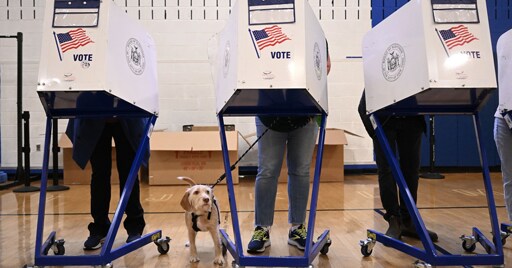- 34 Posts
- 565 Comments

 1·3 days ago
1·3 days agoThis existed before tankies and there has been issues with popular fronts in the past. This video is funny because it has more than just a grain of truth.

 11·3 days ago
11·3 days agoIt’s weirdly satisfying watching the right fracture. Being on the left, we fracture over the most trivial and academic points despite being the party of solidarity and mass power. I hope we can grow the current excitement and victory into something notable.

 12·8 days ago
12·8 days agoEverything about this is so messed up that the incompetent, lazy cop is the least surprising part.
Cheese side down next time.

 5·12 days ago
5·12 days agoThe animorphs series is getting intense.

 2·13 days ago
2·13 days agoThe only thing they said was they are sending election observers. How does that answer any of the very valid questions I asked?

 11·13 days ago
11·13 days agoThe Courts are, as you noted, already in line with or an ineffective hedge against the administration. I think there are other opposition groups. I suspect there are more than a few in the military who are willing to resist. Discounting military leaders has been the downfall of many rebellions.
Replacing personelle isn’t as easy as just putting someone loyal into the position. Execution requires competency and the counter elites don’t have experience to run things effectively save a few notable exceptions. They seem best suited to posturing, making grand proclamations, and breaking things. This is fine when you’re trying to destroy the old order, but building one is a lot harder.
By arresting and murdering protesters.
I’m skeptical they can do this en mass without emboldening resistance at first. Your need a well staffed group of people to deal with this in hundreds of sites and willing to kill people. For everything the MAGA movement has done, they’ve never given a positivist vision for the future. Which is to say, what future are we creating that makes it worth killing people.
None of my critiques should be read as they can’t do it. Rather, these are strategic points at which interference could undermine their efforts.
As for blue states, I think most will gesture towards being offended greatly, but fail to create an effective opposition. I do think a couple will attempt a hot resistance. And if, say, a Pacific front opens, this could be difficult to deal with. Furthermore, pockets of resistence within red states will be very, very difficult to stamp out. Our large geography makes it very difficult to command and control.
I don’t think ICE, even as well funded as they are, have the trained pedosnelle or institutions to replicate anything like a military force. Hell, out military isn’t even well designed to be an effective occupation force.

 13·13 days ago
13·13 days agoLike I said, I don’t disagree that this is a possibility, but I’m curious how people see it unfolding. I like to leverage other minds to develop my thinking.

 71·13 days ago
71·13 days agoI don’t disagree with you, but I feel like people jump to that scenario without describing the steps to get there. How do you see unfolding? How do different opposition groups respond such as the DNC? What about blue states? How does the administration handle it without losing popular consensus? Does it even matter? If they use the military, how do they get the military stay the path when the populous begins to reject their intervention?

 3·14 days ago
3·14 days agoWhile everything you say is mostly* true, it really doesn’t matter. Martial law gives the executive wide and indeterminate decision making.
WWII was not an insurrection so it was not grounds for martial law. The Civil War was seen as an international conflict initially and not an internal insurrection, but it becomes more complicated as it goes on. The 1807 Insurrection Act gives the president a lot of power. Trump has already postured that he can use it to deal with protests in Portland, OR.
* I say mostly true because Congress is granted the ability to determine when elections will happen.

 31·14 days ago
31·14 days agoNo one’s asking the real question… Is that background image AI?
Nevermind that this was from 2018.

 21·14 days ago
21·14 days agoTh real question is, can he declare martial law to prevent or delay the 2028 elections thus extending his second term indefinitely?

 2·15 days ago
2·15 days agoI’ve heard there can be a lot of bullying by well established nurses against new nurses.

 1·15 days ago
1·15 days ago2011 Fit. Great car. Got only 110k on it.

 4·15 days ago
4·15 days agoI wish more companies did this.

The larger temperature controls and the vertically, slightly curved stack make so much sense to me.







Well… This probably means they won’t do anything about it.